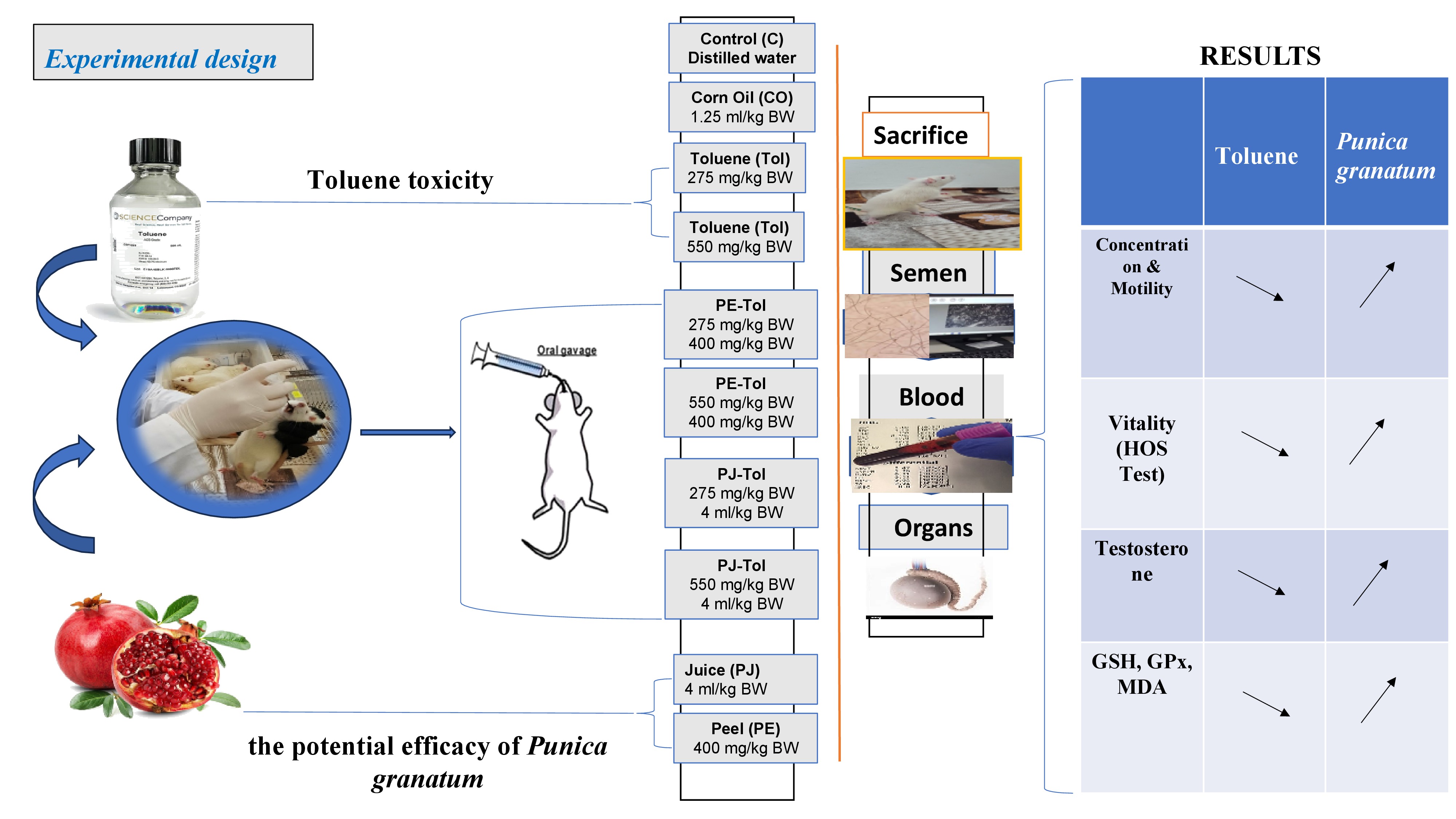
The purpose of our study was to assess the adverse outcomes of exposure to toluene (Tol) on the male reproductive system and to investigate the potential efficacy of Punica granatum juice (PJ) and peel aqueous extract (PAE) against these effects. Rats were divided into the following groups: Control (C), positive controls (CO: 1.25 mL/kg BW, PJ: 4 mL/kg BW, PE: 400 mg/kg BW), Tol1: 275mg/kg BW, Tol2: 550 mg/kg BW, and the four mixtures (PJ-Tol1, PJ-Tol2, PE-Tol1, PE-Tol2). After 6 weeks of oral treatment, sperm parameters were assessed using the CASA system, along with measurements of testosterone concentration, and testicular malondialdehyde (MDA), glutathione (GSH) levels, GSH-peroxidase (GSH-Px) activity. The results indicated that toluene-induced reproductive toxicity is dose-dependent, which was evidenced by significant reductions in sperm concentration, motility, vitality, and plasma testosterone levels (P ≤ 0.05) , with a marked elevation in dead and immotile sperm. Additionally, toluene reprotoxicity resulted in increased lipid peroxidation and decreased anti-oxidants capacity. However, the status of lmost parameters was markedly restored in the group treated with PAE combined with Tol compared to PJ and Tol group. Based on this evidence, we conclude that subchronic exposure to toluene can induce significant testicular dysfunction and oxidative damage in male rats(P ≤ 0.05) . PAE demonstrated greater efficacy in to mitigating Tol reprotoxicity compared to PJ by enhancing antioxidant defences.
Key words: Casa system, Oxidative damage, Punica granatum, Sperm parameters, Toluene.
Total file downloads: 17